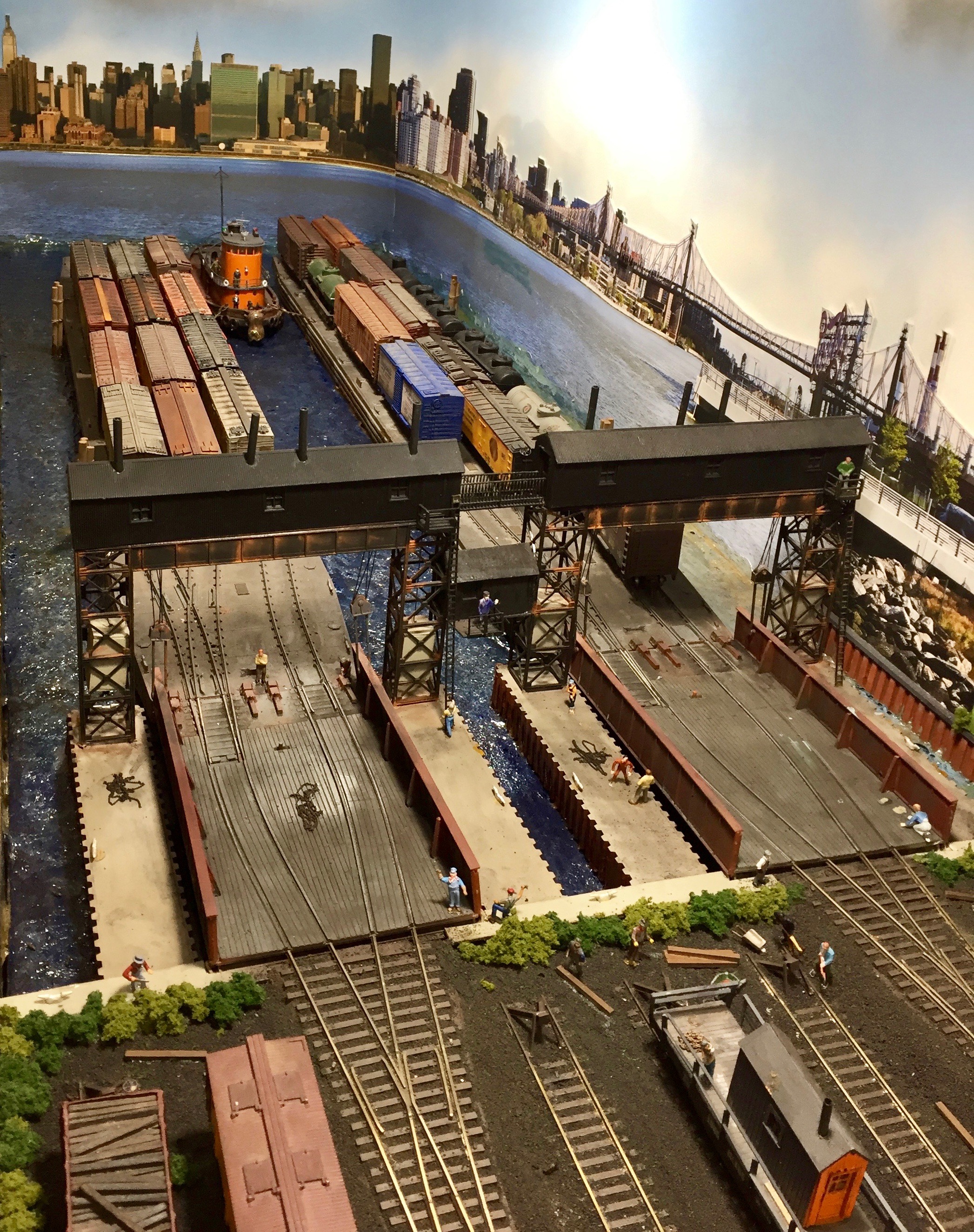^Top
Lightning and DCC
A lightning strike close to my
house took out my DCC system: the purpose of this article is
to share my experiences in troubleshooting and restoring my
system to operation.
View Article
Making Custom Photo Backdrops

Many model railroaders
simulate depth in their model railroading scenes by using
backdrops. if you are modeling a specific location or area,
you might like to have a backdrop that depicts the specific
location or area you are modeling. This article describes a
solution to a unique challenge. My car float yard and the
car floats are located in a corner. If a viewer was standing
in the aisle and looking at the car floats, they would be
looking north up the East River, and they would see the 59th
St. Bridge in the distance. However, if they were looking at
the car floats as if they were standing in the car float
yard, they would be looking due west and would see the
Manhattan skyline about 1/4 mile away.
View Article
Why Do Model Trains Derail And
The Real Ones Don’t?
I spend hours “tuning up” the
track and rolling stock before any invited guests come over
to see my layout so there won’t be any embarrassing
derailments. However, without fail, the minute the guests
have arrived and I fire up the trains, a passenger or
freight car will derail, usually in the hidden loop so that
I need to crawl under the benchwork and fish it out. This
article explains from an engineering perspective that the
word “scale” in “scale model railroading” does not apply to
all aspects of model railroading.
View Article

Using a Selfie Stick for Model
Railroad Photography
With your cell phone on the
end of an inexpensive Selfie Stick, you can take some great
pictures of your model railroad from viewpoints that were
previously inaccessible.
View Article

Installing Berkshire Junction
Operating Crossbucks
This article describes how to
install HO scale operating cross bucks manufactured by
Berkshire Junction. A circuit board activates operating
crossbucks at a roadway crossing. The circuit employs two
sets of infrared emitters aimed across the tracks towards
detectors on the other side. One emitter/detector set is
upstream of the crossing, and the other set is downstream of
the crossing. When a train approaches the crossing, the
infrared beam of light is broken by the passing train and
activates the crossbuck flashers. When the train passes
beyond the second emitter/detector set, the crossbuck
flashers turn off.
View Article

Car Float Operations
Without an easy way to
transport freight cars from the U.S. mainland to Long
Island, the Long Island Rail Road (LIRR) used car float
barges to transport freight cars across lower New York
harbor to float bridges and associated gantry cranes in
Brooklyn and Queens. This article discusses the car float
barges, float bridges, and gantry cranes used in the
transfer process, as well as the car removal and loading
sequence needed so the barges would remain level. The
article then describes how I modeled the LIRR car float
bridges, gantry cranes, and yard in Long Island City in the
Borough of Queens.
View Article











